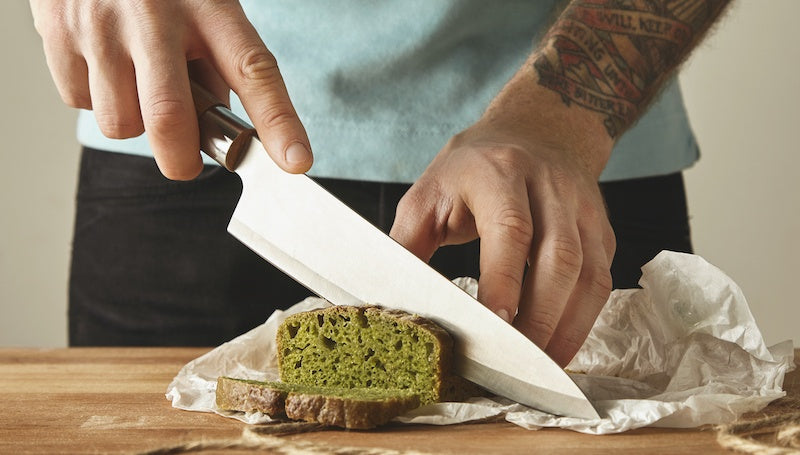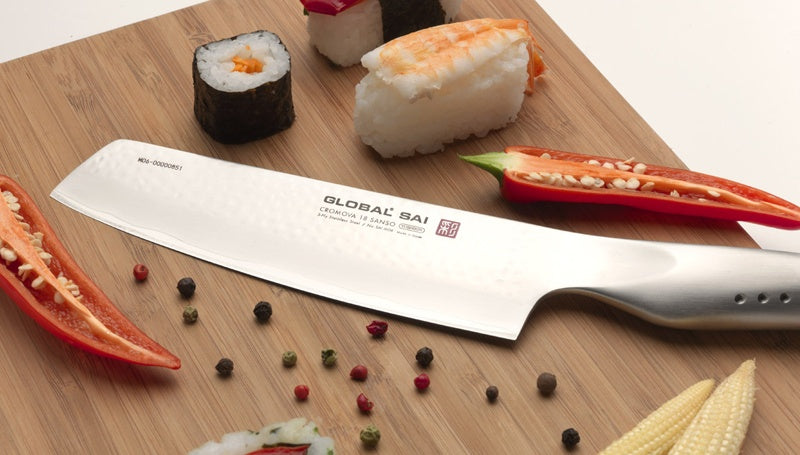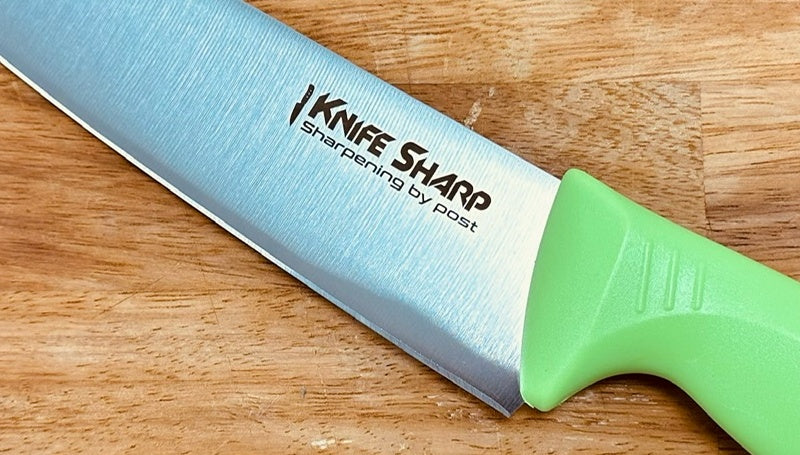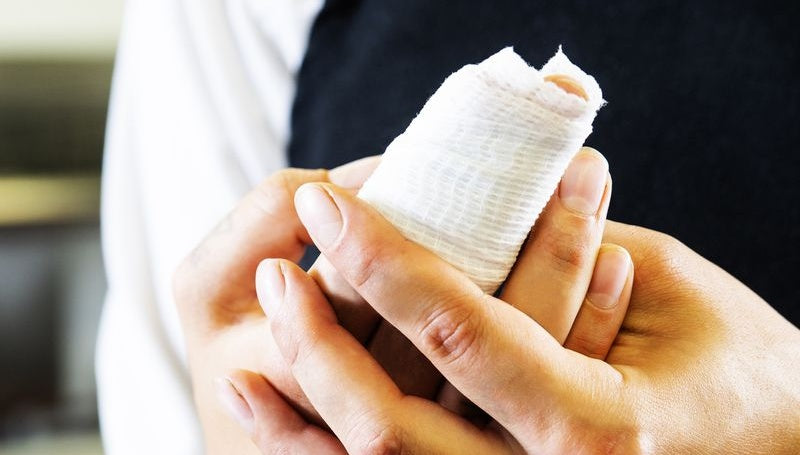FREE SHIPPING ACROSS THE UK
5 STAR CUSTOMER REVIEWS ⭐️⭐️⭐️⭐️⭐️
SHARPNESS GUARANTEED
FREE SHIPPING ACROSS THE UK
5 STAR CUSTOMER REVIEWS ⭐️⭐️⭐️⭐️⭐️
SHARPNESS GUARANTEED
Add description, images, menus and links to your mega menu
A column with no settings can be used as a spacer
Link to your collections, sales and even external links
Add up to five columns
Add description, images, menus and links to your mega menu
A column with no settings can be used as a spacer
Link to your collections, sales and even external links
Add up to five columns

Improve your Knife Skills
February 25, 2020 3 min read
Being able to use a knife properly in the kitchen is a life skill you will always be able to call upon. Preparing food is quicker, safer, and more fun if you have a few basic knife skills in your back pocket. Chefs spend years perfecting their knife skills, however, have a read of the below for some key points to help you on your way…
Make sure your knife is sharp
First thing first, there is no point trying to cut well with a blunt or damaged knife. Having to force a knife through something can result in serious injuries if it goes wrong. So, make sure your knife is as sharp as it can be, we can help with that. If your knife is nice and sharp and you have a honing steel, a few strokes with that will ensure the knife is in perfect condition and help to keep it sharp for longer.
Holding your knife
The best way is to use to the handle, nothing much good comes from holding the sharp end! Joking aside make sure your hands are clean and dry, and then hold the knife by the handle with your hand butted up to the bolster if your knife has one, if not hold it as close to the blade (while still on the handle) as possible. This will give you the greatest control over the blade.
The basic cuts
Every chef should have these cuts down to a fine art. They will get you through most types of food prep easily, quickly and safely…
Julienne – This is a French cooking term that is used to describe long, thin strips. This technique is most commonly associated with cutting vegetables such as carrots, peppers, and onions. Cut the vegetable in half, and lay it cut side down, slice it lengthwise to make a block, and then slice by move your guiding hand backwards while cutting to make thin, uniform cuts.

Chiffonade – Again this is a French term that is translated to “made of rags”. This cut is used often when cutting herbs or leafy green vegetables like basil and spinach. For example, to cut mint leaves you would first stack the mint leaves (with stems removed) in a pile, then tightly roll them up lengthways like a cigar, you now slice the leaves into thin slices which when they unroll will form really nice ribbons. This technique is great to produce small ribbons of herbs that you can sprinkle over dishes as a finishing touch.

Mincing - Mincing is very similar to the basic chopping cut. The difference being that minced foods are chopped very finely so they can literally dissolve when cooking. To mince, cut the food lengthwise into strips, then again after turning 90 degrees. Place one hand on the top of the knife to hold it steady and be sure to keep the tip of the blade anchored against the cutting board as you chop. Continue this motion as you mince by moving the knife back and forth swiftly through the pile.

Brunoise – this is to cut a vegetable into small cubes of precise and uniform measurement, producing cubes of about 3 mm or less on each side. Brunoise cut vegetables are often used in sauces or as a garnish for soups and are commonly applied to hard vegetables such as carrots, celery, and potatoes. To do a brunoise, the first step is to regularize its shape into a rectangle or square by topping and tailing it and squaring off the sides. Then cut it into 5 cm long pieces, then cut each of those pieces into 3 cm thick slices. Stack those slices, then cut them lengthwise into 3 mm wide sticks. Then stack the sticks and using your knuckles as a guide for the blade of the knife, slowly and deliberately slice off pieces 3 mm wide. That will give you your very pretty brunoise cubes!

These 4 cuts will get you through most things in the kitchen, while there are lots more different cuts out there, once you have mastered these 4 you can go on and discover more with a really good solid base to your knife skills.
As we said the first step to making great cuts is to have your kitchen knives professionally sharpened so please take a look at our knife sharpening by post service.
Stay Sharp!
Also in The 'Sharp' Blog

Identifying fake & counterfeit Global knives
May 01, 2024 3 min read
Here at Knife Sharp, we sharpen hundreds of Global knives every week. We love them as they are high quality and hold a fantastic sharp edge. However more recently we have been seeing more and more fake Global knives come to us...
Read More

New and Improved! Knife Sharp Chefs Knife
January 23, 2024 1 min read
We have been selling our specially designed Knife Sharp chefs knives for a good while now, with great feedback from our customers, but for 2024 we've decided to give it a bit of a upgrade! Our new knife is still specially designed and made for us...
Read More

Why Sharp Knives are Safe Knives!
August 18, 2023 2 min read
Here at Knife Sharp we often come across people saying they don’t want their knives sharpening as they feel like they will cut their fingers more often when using them. This is the exact opposite to what will happen! A sharp knife is a much safer knife, here’s why…
Read More
